Life in our Foothills July 2023 – A Colorful Look at the Horses of HERD – A pair of gray mares and their foals join the family
Published 1:13 pm Wednesday, July 26, 2023

- Sloan and his mother, Calypso, who is a flea-bitten gray.
|
Getting your Trinity Audio player ready...
|
Today I am taking an inquisitive look at our collection of equines, based solely on coloring. In our rescue, Helping Equines Regain Dignity (HERD), the majority of horses and ponies we save are true redheads.
Sorrel is a reddish coat color of a horse lacking any hint of black. It is the most common shade of chestnut—a deep, brassy, color, like a new copper penny. Truth be told, many of us who support HERD have a weakness for chestnut horses. This is also the most common coat color.
To have a dash of black in the mane, tail, and legs makes a red-coated horse a true bay. Surprisingly, we have no bays here on the ranch at this moment. Oh, we have had them in the past. There was Certain, Scout, Braveheart, Harmony, and Comet to name a few bays who have graced us with their shiny, gleaming coats complemented by black manes and tails.
Presently, we have six chestnut horses, a strawberry roan, three black horses, two buckskins, and two fancy overo paints. The most exotic of them all, of course, is me, a chocolate palomino.
We recently welcomed a pair of silvery-maned gray mares. They appear to be flea-bitten gray and joined us with newborn foals at their sides. It looks like both of their dark-colored offspring, a colt and a filly, will also transform into gray, with the quick passage of time.
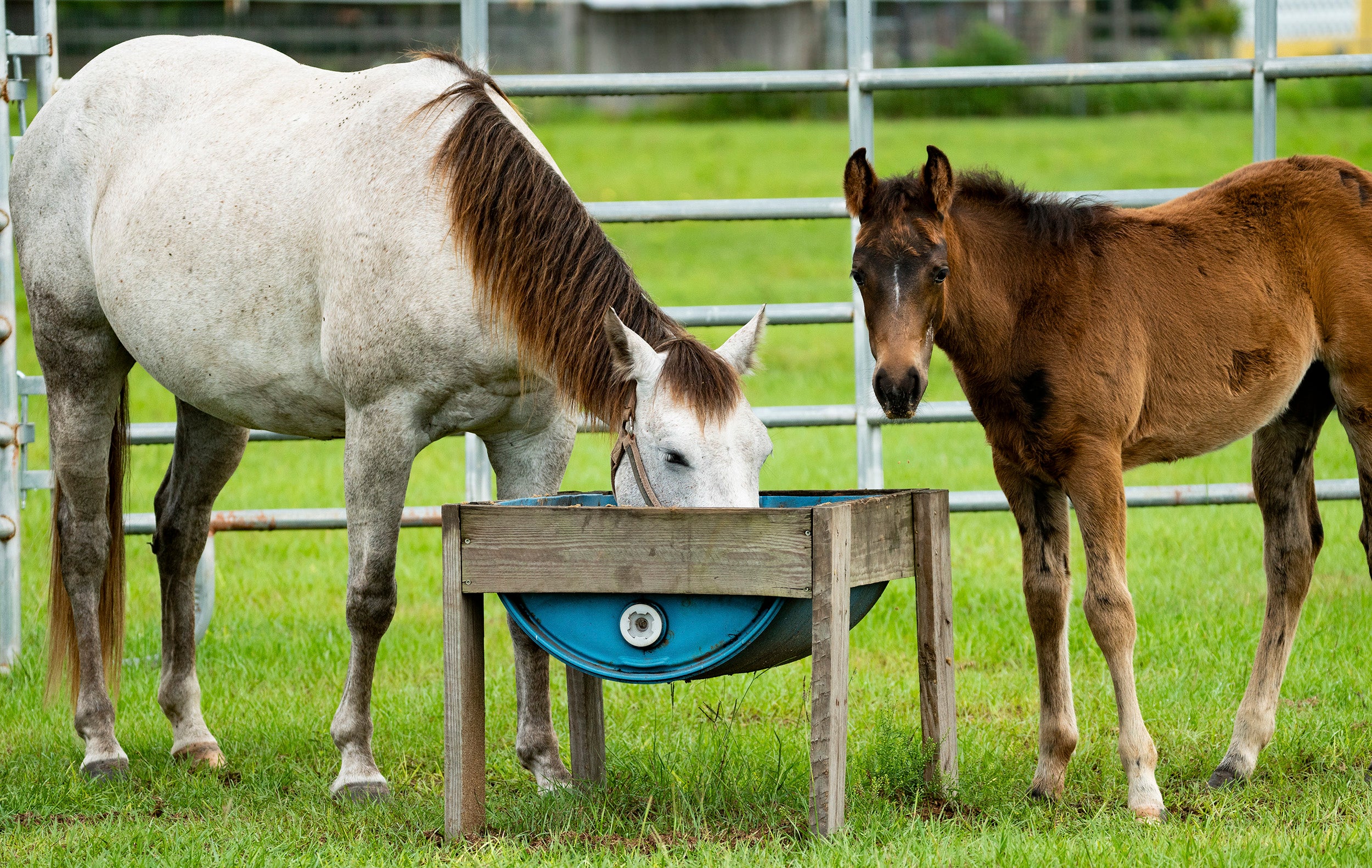
Flea-bitten gray mare Grace with her filly, Mia.
Gray horses carry a dominant gene for their coloring that supersedes all other coat options. That is why they are born one color – for example, bay, – and as the equine ages, they gradually turn from silver gray to almost white in color.
I suppose flea-bitten may have a negative ring for most non-horsey folks. Who wants a flea-bitten dog, a flea-bitten cat, or even an old sofa with this term associated with it? However, flea-bitten gray is a rarer coat color for a horse. An equine born with this important gene looks quite ordinary when it is born, having a chestnut or bay base. As these equines age, the coat starts transforming to gray.
Flea-bitten gray babies also begin to develop bay highlights shortly after their birth, whereas the other gray horses can be identified a bit later by their dappled silver coats and black manes.
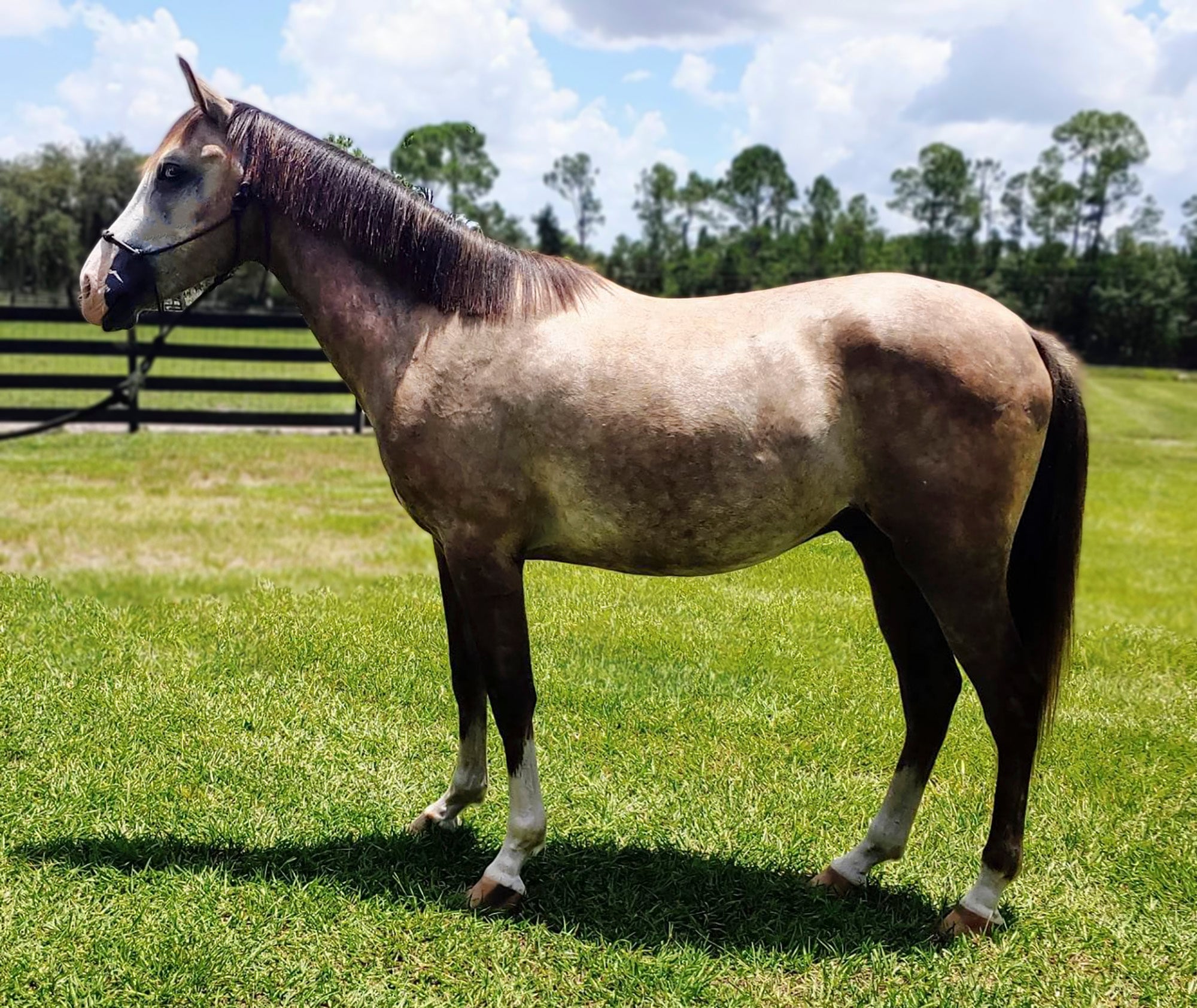
Polaris, a dapple-gray compared to a flea-bitten gray
Take our rescue yearling colt, Polaris, for example. He arrived on our ranch over two years ago. When he stepped off the trailer, he sported a jet-black coat with tall white stockings and a broad blaze. Now at age three, Polaris is covered in large round black dapples over a silver coat. His mane is still black and so is his tail, but the tip of his thick tail is white. Polaris has also greatly expanded in size. He is now over 15 hands and simply stunning.
The prominent difference between the gray horse and the flea-bitten gray horse is the little brown specks that cover their body. Our new mare arrivals have brown freckles. The donors who helped save them from shipping to Mexico to become someone’s dinner named the mares Grace and Calypso. The foals are Mia, the daughter of Grace, and Sloan, the son of Calypso. Grace is age six, Calypso is eight.
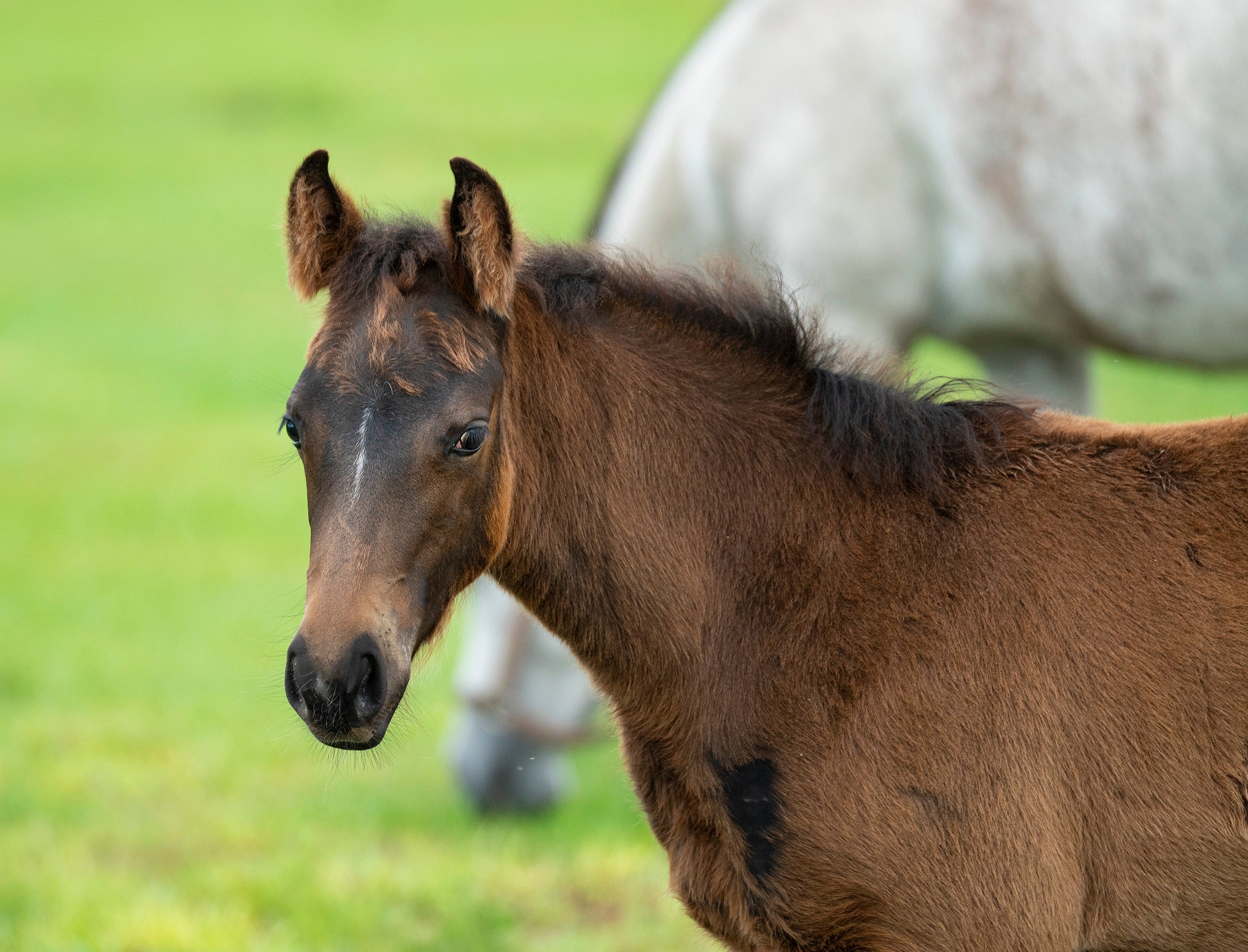
Grace’s filly, Mia
The foals were under a month old when they entered our rescue. All sounds nice and easy, a fairytale ending—but alas it is not so simple. The mares are not easy to handle. They had to be run onto a trailer through a livestock shoot. Calypso is not halter broken and runs backward when asked to have interaction. Neither mare’s feet have ever been trimmed. So, our team of helpers at HERD had to set up special feeding pens in pastures so we can gradually get the mares to accept human interaction. This is vitally important as we must have a vet administer vaccines soon, and handling the babies early in life is so important.
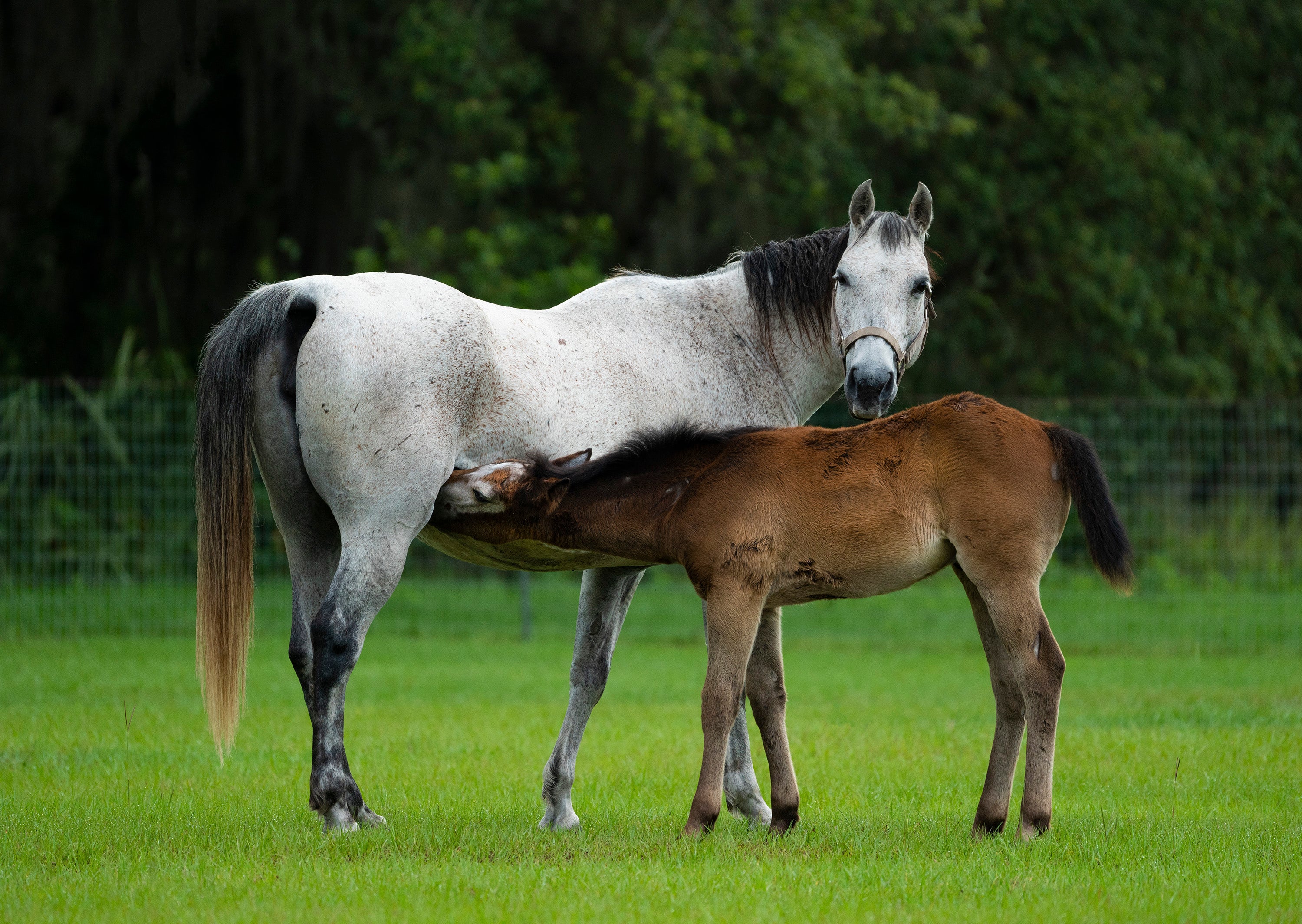
Calypso and her nursing foal, Sloan.
So, as I pen this column, Bill McClelland takes the morning shift to feed the mares and their foals. My mistress Heather takes the evening shift, and she lingers, sitting in the feeders so the mares must engage with her to eat their dinner. Slowly but surely, it is working. Heather is the carrot for these mares. She is the treat, demanding only that she is present, and she touches them lightly as they dine.
Surprisingly, Sloan, the bold colt of Calypso, is the most eager to interact with Heather. He greets her at the gate. He accepts feed from her hand and lets her know he is the man about town in his pasture. He is one month old and each day Sloan transforms.
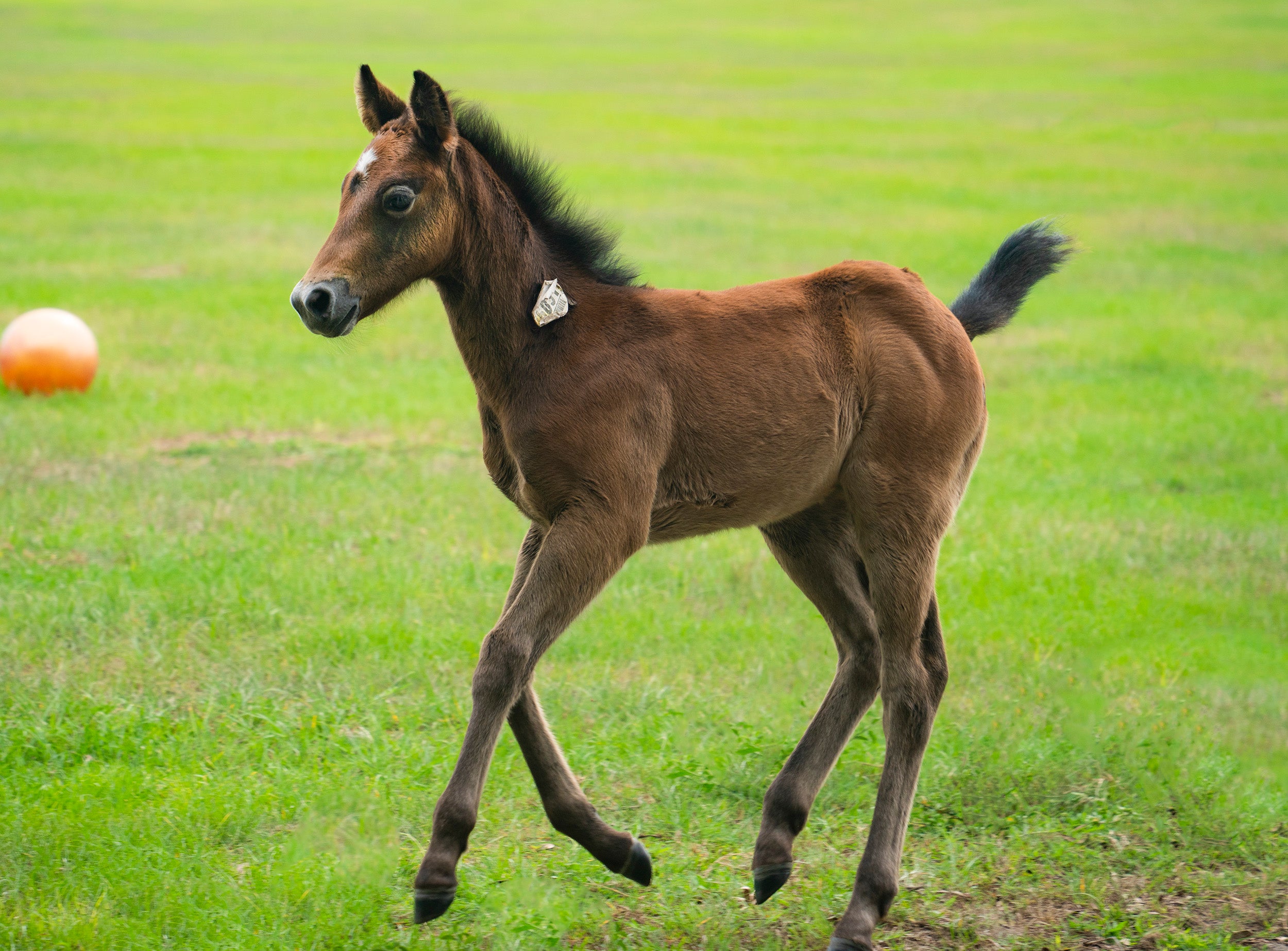
Newborn Sloan on arrival day to HERD. Note the auction tag glued onto his neck.
First, the area around his eyes became gray. Next, his muzzle turned gray. Areas around his ears are also turning gray. Meanwhile, filly Mia has only a small gray streak down the side of her head. She is playful, kicks out at Heather, and is not interested in engagement. Oddly enough, her mother is the friendlier of the two mares. Mia is the cautious one of the two foals.
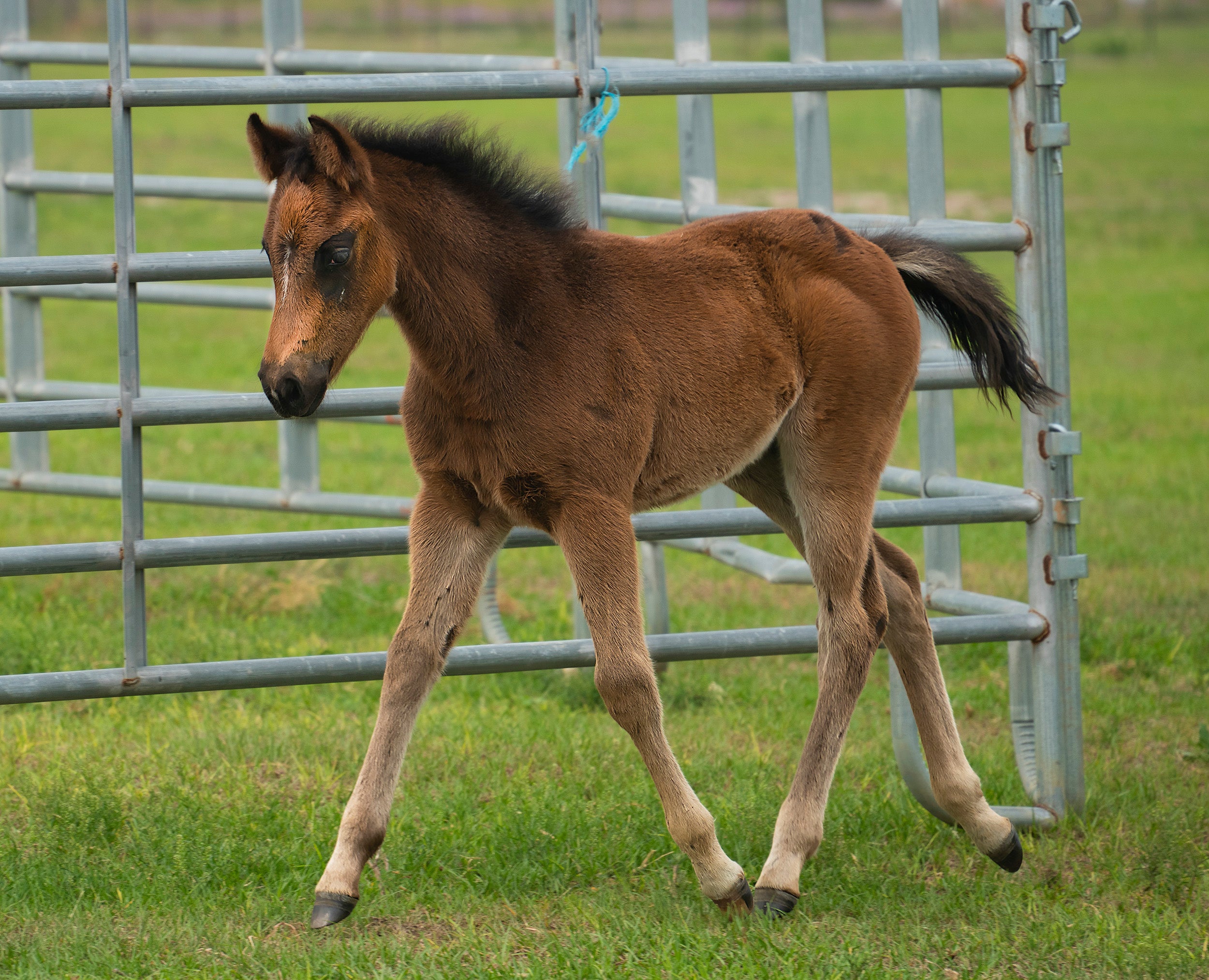
Newborn Mia on arrival day into HERD.
There are so many unknown factors in rescue work. The gray area for us concerns these mares’ past lives. We were told that the stallion that produced their new foals was sired by the champion reining horse, Smart Spook. Their previous owner did not care enough about them to document their breeding, have them registered, or send any information about the mare’s history to help them find a safe landing.
They were sold for their meat weight at auction with the foals, only a few days old, at their sides.
Imagine their insecurity, having to cope with the fear of the unknown. The good news is they are safe, cradled in the care of HERD to raise their babies. It was truly a gray day for them earlier with a questionable future. Now with us, there is colorful hope ahead for four gray horses.
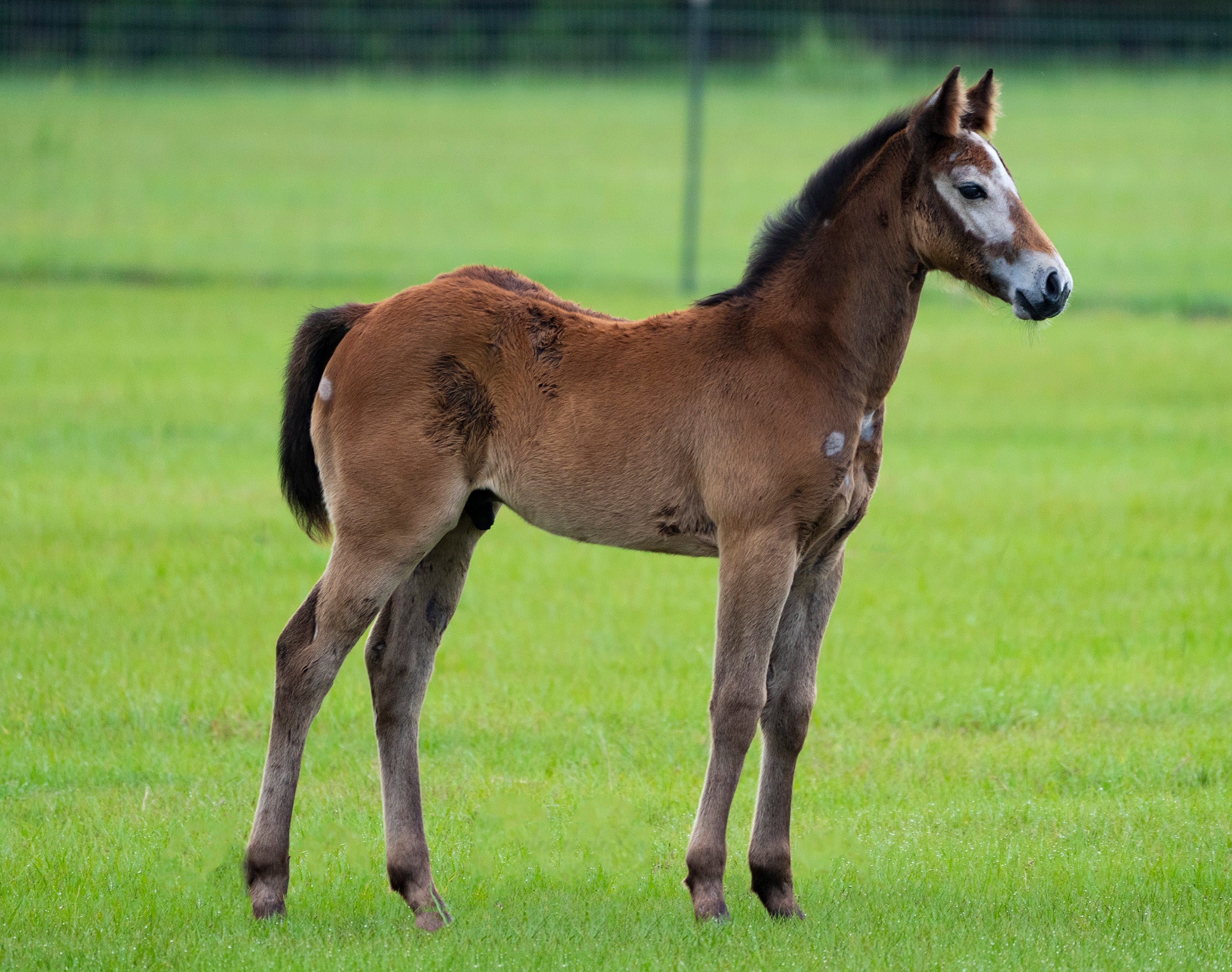
Sloan, the colt, turning gray on his face.





